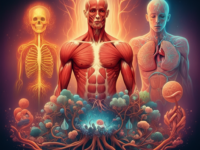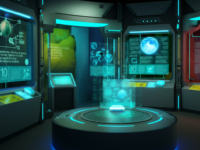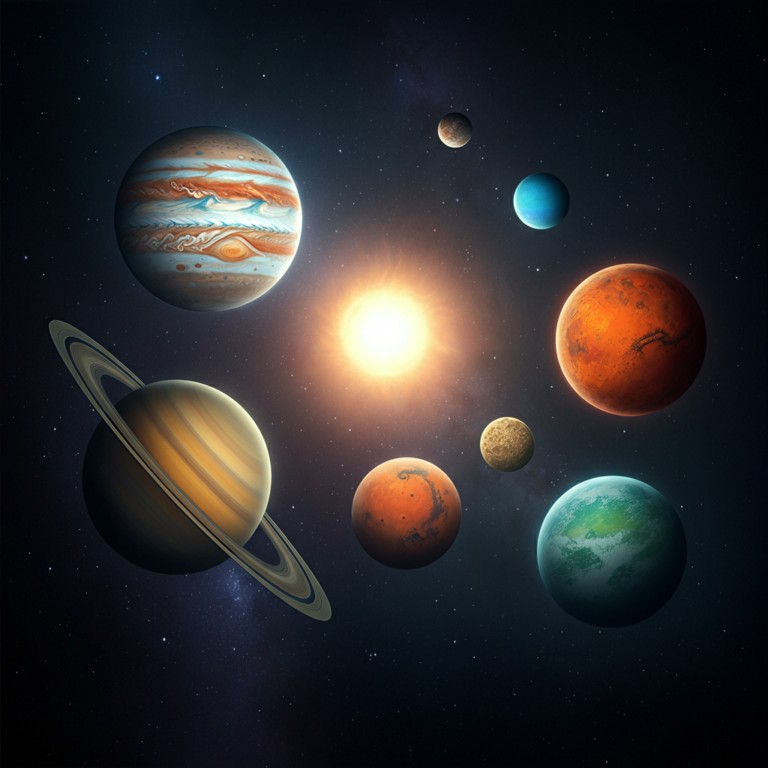Our solar system is a vast and fascinating place, filled with wonders that continue to inspire astronomers and space enthusiasts alike. From the fiery surface of Venus to the towering storms on Jupiter, each planet has unique characteristics that set it apart. Understanding our planetary neighbors not only sparks curiosity but also helps us appreciate the complexity and grandeur of the cosmos.
This blog explores 10 amazing and fun facts about the planets in our solar system. Whether you’re a curious mind eager to learn or a space enthusiast seeking to deepen your knowledge, this guide will leave you marveling at the wonders of our celestial neighborhood.
What Is a Planet? A Quick Refresher
Before we jump into the fun facts, it’s essential to revisit what defines a planet. According to the International Astronomical Union (IAU), a planet must meet three criteria:
- It must orbit the Sun.
- It must have sufficient mass to assume a nearly round shape (hydrostatic equilibrium).
- It must have cleared its orbit of other debris.
These rules exclude celestial bodies like Pluto (classified as a dwarf planet) but include Mercury, Venus, Earth, Mars, Jupiter, Saturn, Uranus, and Neptune.
Now, let’s take a closer look at these planets and uncover some fascinating details about each one!
Mercury: The Speed Racer of the Solar System
Mercury is the smallest planet in our solar system, and it’s also the closest to the Sun. Its proximity to the Sun gives it some remarkable characteristics.
- Fastest Orbit: Mercury zooms around the Sun in just 88 Earth days, making it the fastest planet in our solar system.
- Wild Temperatures: Despite being close to the Sun, Mercury experiences extreme temperature fluctuations—from 800°F (427°C) during the day to -290°F (-179°C) at night!
- No Atmosphere: Mercury has practically no atmosphere, so it cannot retain heat, which explains its dramatic temperature swings.
Venus: The Planet of Acid Rain
Often referred to as Earth’s twin because of its similar size, Venus couldn’t be more different in its environment.
- Hottest Planet: Venus is hotter than Mercury, with surface temperatures reaching a fiery 900°F (475°C) due to an intense greenhouse effect.
- Retrograde Rotation: Venus spins in the opposite direction to most planets, meaning the Sun rises in the west and sets in the east.
- Acidic Atmosphere: The thick clouds surrounding Venus are made of sulfuric acid, creating a highly toxic environment.
Earth: The Most Hospitable
Of course, no planet is as special to us as Earth—after all, it’s our home. Earth sets itself apart in the solar system in several ways.
- Liquid Water Abundance: Earth is the only known planet where liquid water exists on the surface in significant quantities, a key ingredient for life.
- Magnetic Shield: Earth’s magnetic field protects us from harmful solar radiation, making it uniquely suited for life.
- Technological Advancement: Earth is the only planet with intelligent life that has developed space exploration technology (as far as we know!).
Mars: The Red Planet
Mars has long fascinated humanity with its reddish hue and potential for hosting life in its past.
- Dust Storms: Mars experiences some of the largest dust storms in the solar system, occasionally engulfing the entire planet.
- Olympus Mons: Mars is home to Olympus Mons, the largest volcano in the solar system, standing nearly 13.6 miles (22 kilometers) high.
- Water Evidence: Signs of past liquid water have been found, hinting that Mars may have been habitable at one time.
Jupiter: The Solar System’s Giant
Jupiter is the largest planet in our solar system—and it’s a planet of superlatives.
- The Great Red Spot: This massive storm, larger than Earth, has been raging for centuries.
- Moons Galore: Jupiter has at least 92 moons, including Europa, which might harbor an ocean beneath its icy surface.
- Intense Gravity: Jupiter’s massive size gives it an immense gravitational pull, which helps protect Earth by capturing or deflecting asteroids.
Saturn: The Ringed Beauty
Saturn’s rings are its most iconic feature, but there’s plenty more to know about this stunning planet.
- Complex Rings: Saturn’s rings are made of ice particles, rocks, and dust, spanning about 175,000 miles in diameter but less than a mile thick.
- Lightweight Giant: Saturn is the least dense planet; it would float in water (if you could find a bathtub large enough!).
- Titan’s Mysteries: Saturn’s moon Titan has rivers and lakes of liquid methane, making it one of the most intriguing bodies in the solar system.
Uranus: The Sideways Planet
Often overlooked, Uranus boasts some unique features that set it apart.
- Rotates on Its Side: Uranus spins almost horizontally compared to other planets, likely due to a massive collision early in its history.
- Coldest Planet: Despite being closer to the Sun than Neptune, Uranus holds the record for the coldest planetary temperatures at -371°F (-224°C).
- Faint Rings: While not as prominent as Saturn’s, Uranus also has a system of 13 faint rings.
Neptune: The Windy Blue World
The farthest planet from the Sun, Neptune is a deep blue world with some extreme characteristics.
- Supersonic Winds: Neptune experiences the fastest winds in the solar system, reaching speeds of over 1,200 mph (1,931 km/h).
- Methane Atmosphere: The blue color of Neptune comes from the methane in its atmosphere.
- Triton: Neptune’s largest moon, Triton, is unique because it orbits in the opposite direction of Neptune’s rotation—a phenomenon called retrograde orbit.
Quick Planetary Facts Recap
To wrap up, here’s a snapshot of some cool stats about the planets in our solar system:
- Smallest Planet: Mercury
- Hottest Planet: Venus
- Planet with Life: Earth
- Largest Volcano: Mars (Olympus Mons)
- Most Moons: Jupiter
- Most Recognizable Rings: Saturn
- Coldest Planet: Uranus
- Fastest Winds: Neptune
Explore More Wonders of the Universe
The planets in our solar system are as diverse as they are captivating. Each one tells a story of extremes—heat, cold, storms, and even potential water!
If this blog piqued your curiosity, why not take a deeper look at space exploration or astronomical technologies aiding our understanding of these celestial neighbors? The more we explore, the closer we bring the vast unknown into focus.
What fact surprised you the most? Share your thoughts in the comments below, and don’t forget to bookmark this page for your next trivia night!





















0 Comments